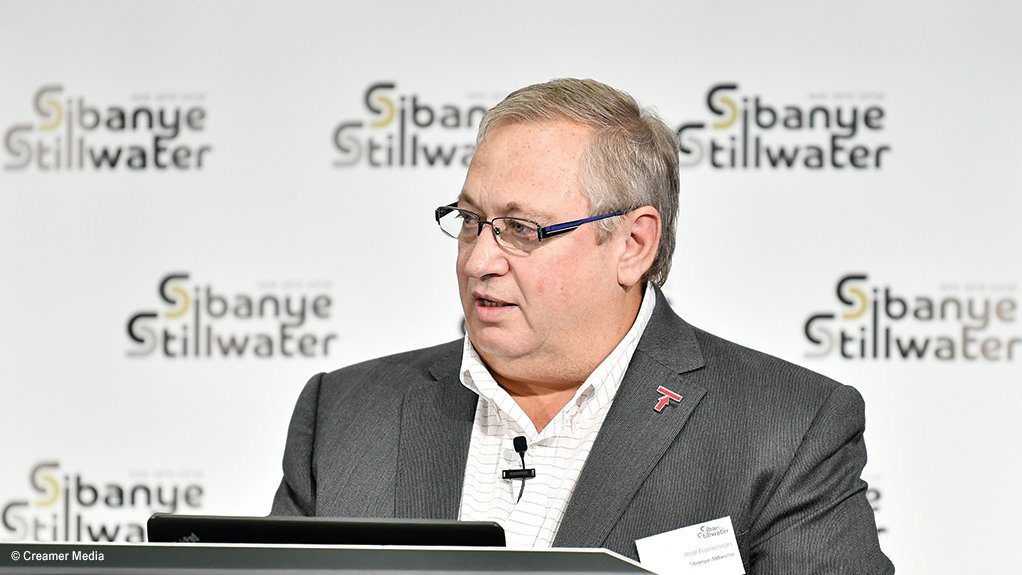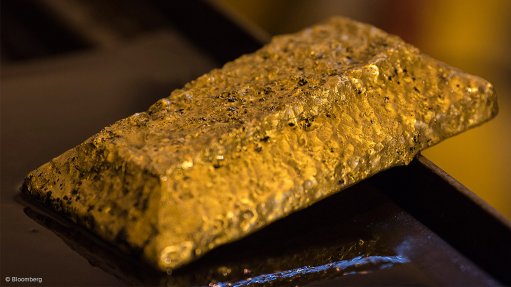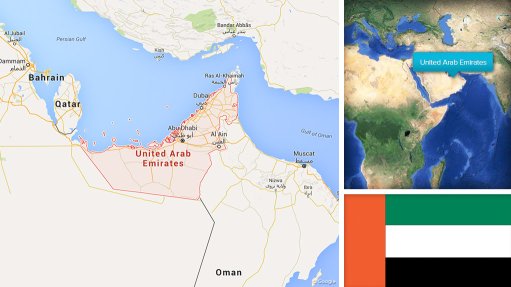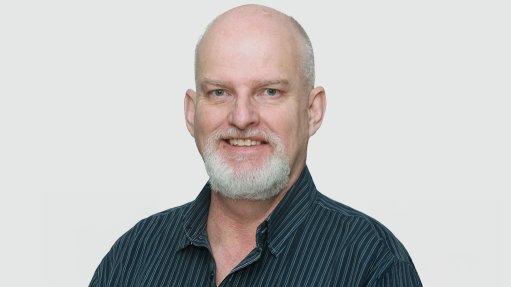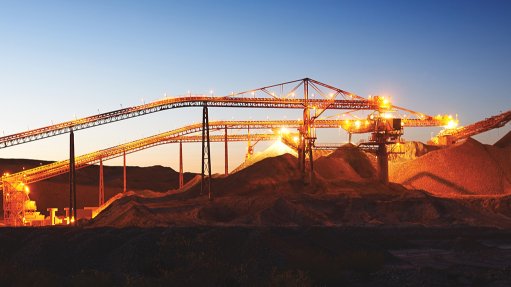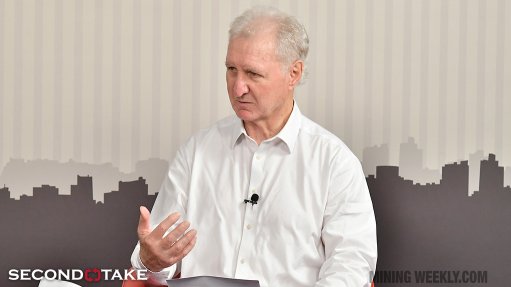Sibanye’s gold operations offset impact of lower PGM prices
Multinational mining and metals processing group Sibanye-Stillwater’s strategic commodity and geographical diversification served it well in the six months ended June 30, with a turnaround in its South African gold operations having provided a cushion against the impact of lower platinum group metals (PGMs) prices.
The group, led by CEO Neal Froneman, on August 29 said the results for the interim period reflected a challenging global macroeconomic and turbulent geopolitical environment, with slowing global growth reducing demand for commodities. This contributed to a decline in most commodity prices during the six months.
It noted that the exception was the gold price.
PGM prices, on the other hand, decreased by 22% year-on-year.
The group’s adjusted earnings before interest, taxes, depreciation and amortisation (Ebitda) decreased to R14.15-billion, compared with the adjusted Ebitda of R22.56-billion reported for the six months ended June 30, 2022.
Its profit also decreased to R7.79-billion, from R12.34-billion in the prior comparable period.
In dollar terms, adjusted Ebitda decreased to $776-million, from $1.47-billion in the prior comparable period, while profit decreased to $427-million, from $803-million in the prior comparable period.
Nevertheless, Sibanye reported that its South African PGMs operations delivered a solid operational performance, producing 799 182 oz of platinum, palladium, rhodium and gold (4E), only 3% lower year-on-year.
“That decline was planned as a result of the closure of the Simunye shaft at our Kroondal operations, which is reaching its end-of-life,” said Sibanye Southern African region head Richard Stewart.
He added that the miner’s response to copper cable theft contributed to the good operational results.
“Last year, we indicated that cable theft had the same impact on production output as what load curtailment did. During the second quarter of this year, we saw, for the first time in several quarters, a decrease in the impact of cable theft, through the commitment of our protection services teams and operating teams coming up with innovative ways of working against the scourge that we are facing.”
He added that, in terms of cost management, the South African PGM operations sustained an “exemplary” cost management, resulting in all-in sustaining costs (AISC) of R19 716/oz of 4E.
While this was 9% higher year-on-year, Stewart pointed out that this was partially owing to the lower production
“Considering that mining producer price index over the same period was well above 15%, that performance saw us continue to move down the industry cost curve with these operations, truly becoming highly competitive in terms of cost margins that are produced.”
The South African PGM operations delivered adjusted earnings before interest, taxes, depreciation and amortisation (Ebitda) of R11.8-billion ($649-million), which was 44% lower year-on-year.
Stewart highlighted that this was mainly as a result of the lower PGM prices.
“What will provide relief this year is that we made our final payment to Anglo American in terms of the Rustenburg earnout in the first half of this year, with any free cash coming out of Rustenburg now being for the benefit of those shareholders, including our minority shareholders at Rustenburg,” he noted.
GOLD OPERATIONS
Stewart stated that, compared with the comparative period of last year, a signficant turnaround had been achieved with the company’s gold operations owing to a successful production build-up following the industrial action experienced in the first half of 2022.
In the first half of this year, gold production was 117% higher, at 12 962 kg or 416 738 oz.
The gold operations delivered adjusted Ebitda of R2.4-billion, compared with a loss of R3.12-billion in the prior comparable period.
This cushioned the group against the decline in PGM prices, as Sibanye reported a 22% increase in the rand gold price received to R1.12-million an ounce.
In dollar terms, the price increased to $1 921/oz, from $1 864/oz in the prior comparable period.
This affirmed gold’s countercyclical value during economic downturns, the company stressed.
“Gold was produced at an AISC of just over R1-million per kilogram during the half year. Our gold operations has been a story of two halves. Post the closure in the first half, we have suffered two signficant events. The first one was a fire at our Driefontein 5 shaft on July 12.
“This also impacted on the Driefontein Shaft 1 for a few weeks. We have started ramping up production again at Shaft 5, with crews going underground and that production ramping up again. We forecast, however, that this could have an impact of about 900 kg relative to the original guidance given for the full-year.”
In addition, Sibanye has experienced signficant levels of seismicity across several of its gold operations. This includes the Driefontein 4 Shaft, the Driefontein 8 Shaft, as well as at Kloof 4 Shaft.
Seismicity at Kloof 4 Shaft, in particular, has impacted on Sibanye’s flexibility, and increased the footprint needed to mine to sustain output. This has also compounded cooling and ventilation constraints.
“On July 30, we had an incident at Kloof 4 Shaft. A counterweight to our conveyor system got caught in the shaft, and this fell down the shaft, creating damage below 39 level to 46 level. This has stopped production at this operation.
“We are currently still assessing the impact of this incident, combined with the seismicity and cooling and ventilation constraints, and for that reason have included no further production from Kloof 4 for the balance of this year.
“The rest of our operations pleasingly are producing as expected and planned, and generating good profits at current prices,” Stewart said.
Meanwhile, Sibanye noted that the actions taken to address the impact of load curtailment on its South African operations have proven effective.
The measures taken included the rescheduling of energy-intensive activities to lower-demand periods and using the installed generation capacity at its gold operations.
"Our self-generation strategy has progressed, with our first renewables project, the 89 MW Castle Wind Farm announced in July, with earthworks on site now in progress.
"This is a measurable milestone in the implementation of our 600 MW renewable energy programme, which is expected to be complete by 2026 and forecast to significantly reduce operating costs and our dependence on Eskom, as well as the carbon emissions attributable to a reliance on Eskom's coal-fired generation, which dominate our current Scope 2 emissions," the company said.
US PGM OPERATIONS
In terms of the company’s US PGMs operations, Sibanye Americas region head Charles Carter said the company’s interim results were negatively impacted by an incident at the Stillwater West mine.
“We’re also experiencing an ongoing skills shortage amongst miners and mechanics in particular. This is owing to a tight labour market in Montana, with unemployment at around 2.4%
“Those with technical skills have been spoilt for choice on new mining opportunities elsewhere in the US, as well as non-mining employment opportunities in Montana, such as construction and infrastructure build.
“We’re starting to get some success with new recruitment and retention strategies. And we're also focusing on longer term initiatives, such as in-house training of mechanics and miners, to build a skills pipeline for the long term.”
Meanwhile, Carter pointed out that the company has experienced sharply lower platinum and palladium (2E) PGM prices, which has reduced cash flows.
“The company is still set on maintaining development spend to create greater flexibility at our orebodies at both Stillwater and East Boulder over the medium term.
“Throughout the remainder of the year, we will see lower unit prices, while we are also reviewing all aspects of our spend to better position the business for potential lower prices going forward.”
He added that platinum, palladium and rhodium (3E) recycling volumes also sharply reduced throughout the past six months, in keeping with an industrywide recycling slowdown in North America.
“The six months saw 2E mine production of 205 513 oz. This 11% lower production was attributable to the Stillwater Shaft incident, which saw an eight-week stoppage that largely impacted the mine.
“East Boulder continued to experience skill shortages, and continuing difficult ground conditions that reduce production as against plan. An AISC of $1 737/oz of 2E, which was 27% higher owing to lower production and high development costs, is now being turned around through the remainder of this year.”
Carter added that July to August saw higher volumes at Sibanye Stillwater in particular, as the company is working to get East Boulder “back on plan”.
“We are expecting a second half that tracks back to plan, with a better production and cost profile at both operations.
“These results have started to estimate a production cost credit that flows from the Inflation Reduction Act that has been legislated in the US, although we are still awaiting detailed clarification from US tax service the Internal Revenue Service, among other regulators on its specific treatment for our business. We have been conservative in its application until such time that we have affirmed guidance from the regulators”.
OTHER METALS
Meanwhile, the Sandouville nickel refinery, in France, produced 2 705 t of nickel cathode and 788 t of nickel salts in the first half of this year.
Previously reported operational issues at the cathode unit continued during period, impacting on production. Repairs were largely completed during the six months under review, with 50 out of 58 cathode cells operational by the end the period and operational stability and nickel recoveries improving.
Further improvements in the operational performance are expected during the second half of the year.
"New management appointments during the period have already delivered positive outcomes, with a detailed optimisation study to improve plant performance under way and completion expected before year-end," Sibanye said.
Studies on PGM autocatalyst recycling, battery-grade nickel sulphate and battery metals recycling projects, which were the basis for the acquisition of the Sandouville assets, are scheduled to progress to the next stages before the end of this year.
During the first half of this year, Sibanye also acquired control of New Century Resources, in Australia. Integration of the assets is expected to be concluded during the second half of the year.
A feasibility study on Mount Lyell – a previously operated copper mine, in Tasmania – is under way and a decision on the option of acquiring 100% of Mt Lyell from Vedanta Resources will be taken by early November.
Further, construction on the Keliber lithium refinery, in Finland, started in March. The refinery is expected to start production of battery-grade lithium hydroxide in 2025.
on track to produce battery grade lithium hydroxide in 2025 - equity capital fully funded
Negotiations to advance the debt financing for the remaining project capital is under way, post the successful conclusion of a €104-million rights issue in April.
Article Enquiry
Email Article
Save Article
Feedback
To advertise email advertising@creamermedia.co.za or click here
Press Office
Announcements
What's On
Subscribe to improve your user experience...
Option 1 (equivalent of R125 a month):
Receive a weekly copy of Creamer Media's Engineering News & Mining Weekly magazine
(print copy for those in South Africa and e-magazine for those outside of South Africa)
Receive daily email newsletters
Access to full search results
Access archive of magazine back copies
Access to Projects in Progress
Access to ONE Research Report of your choice in PDF format
Option 2 (equivalent of R375 a month):
All benefits from Option 1
PLUS
Access to Creamer Media's Research Channel Africa for ALL Research Reports, in PDF format, on various industrial and mining sectors
including Electricity; Water; Energy Transition; Hydrogen; Roads, Rail and Ports; Coal; Gold; Platinum; Battery Metals; etc.
Already a subscriber?
Forgotten your password?
Receive weekly copy of Creamer Media's Engineering News & Mining Weekly magazine (print copy for those in South Africa and e-magazine for those outside of South Africa)
➕
Recieve daily email newsletters
➕
Access to full search results
➕
Access archive of magazine back copies
➕
Access to Projects in Progress
➕
Access to ONE Research Report of your choice in PDF format
RESEARCH CHANNEL AFRICA
R4500 (equivalent of R375 a month)
SUBSCRIBEAll benefits from Option 1
➕
Access to Creamer Media's Research Channel Africa for ALL Research Reports on various industrial and mining sectors, in PDF format, including on:
Electricity
➕
Water
➕
Energy Transition
➕
Hydrogen
➕
Roads, Rail and Ports
➕
Coal
➕
Gold
➕
Platinum
➕
Battery Metals
➕
etc.
Receive all benefits from Option 1 or Option 2 delivered to numerous people at your company
➕
Multiple User names and Passwords for simultaneous log-ins
➕
Intranet integration access to all in your organisation



